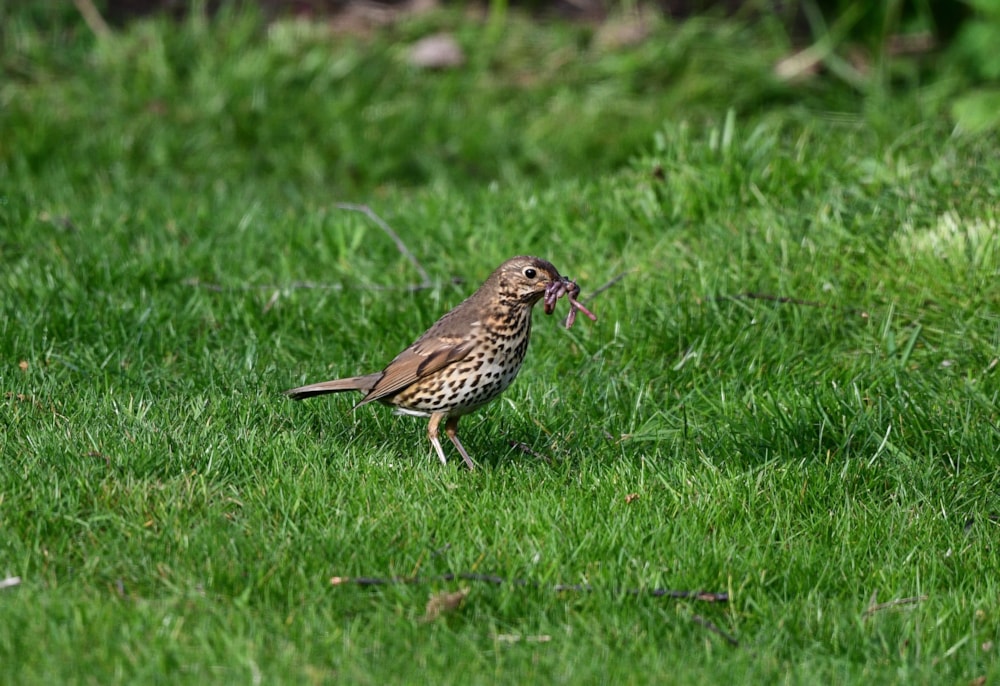New research from the British Trust for Ornithology (BTO), published in Ecological Indicators, shows how counting common bird species reveals important information about the number of earthworms in the soil.
Invertebrates such as earthworms are vital for soil heath, but concerns are being expressed about declines in their populations. There is little information on how earthworm numbers and soil health have changed over recent decades. This new study enlisted the help of more than 20,000 children from schools up and down the country, as part of a project called 'What's Under Your Feet'.

The number of earthworms present underground in certain areas correlates with the amount that are being eaten by birds, the study found (Jane Rowe).
They dug up small patches of their playing fields and counted how many earthworms they found, before counting the birds on those fields. The results showed that the number of earthworm-eating birds, including Blackbirds and European Robins, was strongly linked to the number of earthworms present.
Importantly, there was no link between earthworm numbers and counts of bird species that do not eat worms, such as Goldfinches and House Sparrows, giving the scientists behind the study confidence in the results. Although there is more work to do, this research opens up the exciting possibility that monitoring long-term changes in the populations of some well-known bird species could help us to monitor not only the health of our earthworm populations, but the health of our soils too.
Lead author of the study, Dr Blaise Martay, said: "It has been fantastic to see how much children have enjoyed digging up worms! And it is even better that this is paired with providing useful data and interesting results. Wouldn't it be great if we could establish this as a long-term monitoring scheme to see what’s happening to our earthworm populations and to explore the links between earthworm and bird populations further? And hopefully this project will start many children off on a lifetime of citizen science looking out for our wildlife."
BTO's Director of Science and study co-author, James Pearce-Higgins, added: "Populations of birds like the Song and Mistle Thrush, which rely on earthworms, have been in long-term decline, particularly in southern England.
"The results of our new study add to the suggestion that a reduction in the availability of earthworms, either due to changing land-use or an increase in the frequency of summer drought conditions, may be partly to blame. We will continue to work to understand more about changes in soil invertebrate populations and how those are affecting our birds."
Reference
Martay, B & Pearce-Huggins, J W. 2020. Opening a can of worms: Can the availability of soil invertebrates be indicated by birds? Ecological Indicators, Volume 113, June 2020. DOI: doi.org/10.1016/j.ecolind.2020.106222

